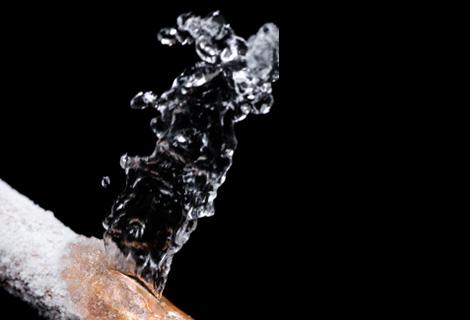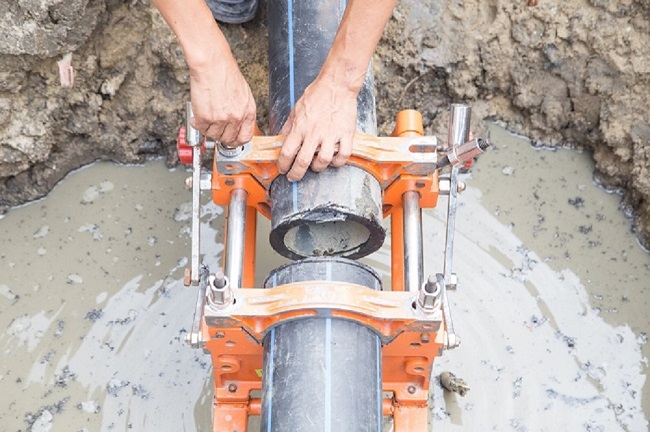Stop the Flood: Methods for Finding and Dealing With Ruptured Pipes
Stop the Flood: Methods for Finding and Dealing With Ruptured Pipes
Blog Article
Just about every person has got his or her own assumption in relation to How to Prepare for Your Dishwasher Installation.

A ruptured pipe is a major emergency; you can only stand as you see water you pay a lot to reunite with the earth. In even worse instances, you observe a pool on your kitchen flooring, which is a terrific trip threat, specifically if you have children around. If the pipeline that ruptured was in your walls, trouble: you may need to paint that entire area.
Just how can a disaster like a burst pipe be prevented and taken care of? Well, by listening to your professional emergency plumbing technicians and adhering to these policies.
How do I recognize when my pipes have ruptured?
Varying water stress
Pipes do not simply burst in a day. You may have observed that your kitchen tap or shower does not run instantly when you transform the faucet. It may stop for a few seconds and afterwards blast you with more force than common.
In other circumstances, the water might seem typical in the beginning, then decrease in stress after a few secs.
Damp walls as well as water discolorations
Before a pipeline ruptureds, it will leak, the majority of times. If this persistent leaking goes undetected, the leakage might graduate into a large gash in your pipe. One simple means to avoid this emergency is to watch out for damp wall surfaces ad water spots. These water spots will certainly lead you right to the leak.
Puddles under pipes as well as sinks
When a pipeline ruptureds, the outflow develops a pool. It might show up that the puddle is growing in dimension, and also despite how many times you mop the pool, in a couple of mins, there's another one waiting to be cleaned. Typically, you might not have the ability to map the puddle to any kind of visible pipes. This is a sign to call a professional plumber.
Untraceable dripping noises
Pipe bursts can take place in one of the most undesirable areas, like within concrete, inside wall surfaces, or under sinks. When your house goes quiet, you might be able to listen to an irritatingly persistent dripping noise. Even after you've examined your shower head and also cooking area faucet, the trickling might continue.
Precious visitor, the leaking might be originating from a pipeline inside your wall surfaces. There isn't much you can do regarding that, except tell a specialist plumber.
Shut down the Water
When water ices up, it broadens in volume by about 9 percent. And it increases with significant force: The pressure inside pipelines might go from 40 pounds per square inch to 40,000 psi! No pipe can hold that much pressure, so it bursts. The break may take place where the ice types, yet more frequently, it takes place where water pressure locates a vulnerable point in the pipe. That might be inches or even feet from the icy location. Discover the water shutoff valve as well as turn off the water to stop more damage. You may also need to shut down the electrical energy as well, relying on where the leaks takes place and exactly how big it is.
Infected water
Lots of people assume a ruptured pipe is a one-way electrical outlet. Quite the contrary. As water spurts of the hole or tear in your plumbing system, contaminants locate their way in.
Your water might be contaminated from the resource, so if you can, inspect if your water storage tank has any troubles. Nevertheless, if your drinking water is provided and detoxified by the city government, you should call your plumber immediately if you see or scent anything funny in your water.
What do I do when I detect a ruptured pipe?
Your water meter will continue to run also while your water wastes. To lessen your losses, find the main controls and also transform the supply off. The water mains are an above-ground framework at the edge of your residential or commercial property.
How to Fix & Detect a Leaking Pipe
How Do I Know if a Pipe is Leaking?
Leak detection tests can help you determine if your pipe has a leak. Even if you don’t see an apparent leak, you should still conduct leak detection tests regularly to save water and money—and prevent major damage to your home.
Water meter. It can be helpful to figure out what your usual water meter usage numbers are and then monitor them regularly. To monitor your meter, first, turn off all water faucets in your home. Check the meter and write down the numbers. In a few hours, check the meter again. If the numbers have changed, you have a leak. Water gauge. Use a water gauge to test your water pressure. Your showerhead should produce a certain amount of water pressure based on its model and design. If the pressure is lower than it is supposed to be for that specific showerhead, your home likely has a leak. Puddles. Look inside your bathroom, laundry, and kitchen sink cabinets. Puddles around the cabinets or around toilets, tubs, showers, and washing machines indicate the presence of a leaking pipe. You may also notice loose tiles, peeling or flaking paint, or mold caused by water accumulation. Napkin test. Even if you don’t see any puddles, you may still have a leak. You can test for water leaks in the bathroom, laundry, and kitchen by wiping below-sink connections with a napkin, paper towel, or piece of toilet paper. If it becomes damp, you probably have a leaking pipe under the sink. Discolored walls. Walls that are discolored—usually with brown or yellow stains—or bulging might mean that they have been impacted by water damage caused by a leaking pipe. Smell. A leaky pipe will create sitting water, and over time, that water may develop a musty smell. If your home smells musty, but you can’t locate the source, it may be due to a leak. Steps for Fixing a Leaking Pipe
A leaky drain can be remedied by tightening the pipe base, replacing the drain seal, caulking the rim, and tightening the pipe nut. Similarly, a leaking toilet pipe can be treated by tightening the packing nut. You may also need to replace the valve. A leaky faucet may just need tightening or replacement of the washers. If that doesn’t work, consider replacing your faucet. If your pipe has a hole in it, you may want to use a pipe leak sealer or pipe leak tape. This quick fix for water pipe leaks can also temporarily fix a copper pipe leak. https://www.ahs.com/home-matters/quick-tips/how-to-tell-if-pipes-are-leaking/

I ran across that write up about How to Install and Connect a New Dishwasher while surfing around the web. Remember to set aside a second to distribute this page if you enjoyed reading it. Thank-you for taking the time to read it.
Book 24/7
Report this page